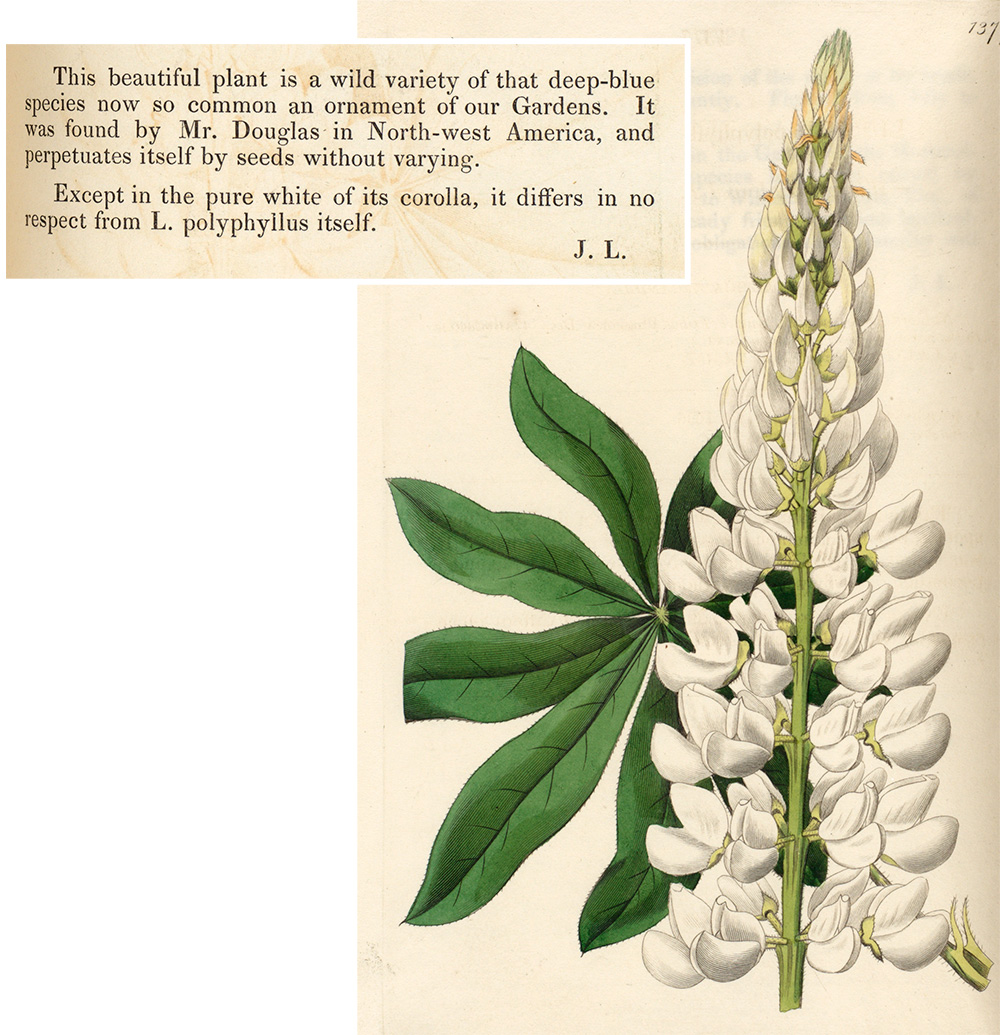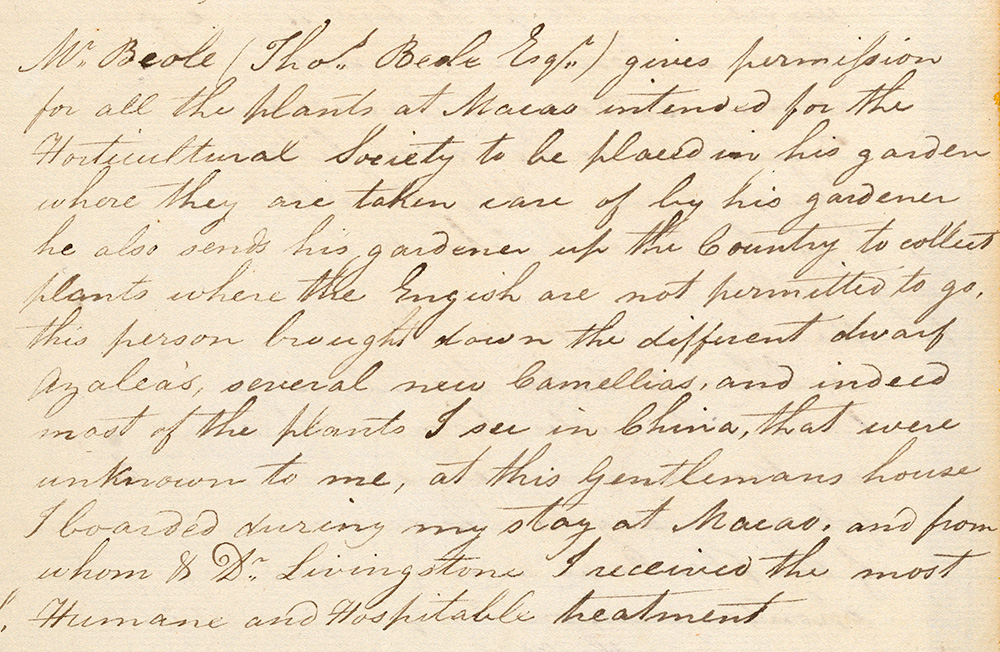Insights into our collections
The missing voices of the RHS Plant Collector Archive
Acknowledging the important role that Indigenous and local peoples played in the work of the Horticultural Society of London’s plant collecting expeditions.
British gardens are filled with plants that have their origins all over the world. The RHS played a pivotal role in broadening the range of plants grown in them, both directly through its plant collecting and indirectly thought its role disseminating plants and information.
However, this history is also interwoven with British colonial expansion and exploitation, a fact that has not been fully acknowledged in the past. Over the last 5 years, the team at the RHS Lindley Library has been working with archival papers relating to the Society’s most active period of plant collecting in the first half of the nineteenth century. The papers were uncatalogued and, if used at all, were consulted simply to track plant introductions and names, but there is so much more they can tell us. We are publishing these papers online to invite new perspectives and research that develops a more complete understanding of the factors that shaped our gardens and gardening.
Archives are records shaped by the ideas and practices of their time. The nineteenth-century plant collectors lived and worked during a period marked by extensive colonialism and imperialism. This period was characterized by assumptions of European superiority and imagined racial and cultural hierarchies. The collectors who worked for the Horticultural Society of London (as the RHS was then known) were shaped by the world they lived in, and their writings reflect contemporary ideas and ideologies.
The plant collectors’ papers contain frequent use of language now considered offensive or pejorative. We have nevertheless taken the decision to publish them in their entirety, with content warnings and an explanation of our approach to cataloguing the papers which can be found here.
Plate 1377 from volume 16 of Edwards’s Botanical Register for Lupinus polyphyllus
These records do not tell the whole story of the way plants were gathered, described and sent to Britain. The collectors rarely acknowledged the contributions of non-European peoples who they met and interacted with to their missions. From the teams of gardeners who tended the gardens and nurseries where collectors bought many of their plants, to groups of armed men delegated by the head of their Nation to protect the European collectors, the papers show that collectors were always in the company of, and depended upon, other people. They acted as guides, translators, labourers, and sometimes plant collectors. Their contributions, though often not attributed, were vital to the survival and the success of the collectors. The collectors travelled on the traditional territories of many non-European peoples and many Indigenous peoples and individuals contributed, voluntarily or not, by their knowledge, labour, or resources to the work of the collectors.
We know from the archives that people from the following groups met, helped, educated, worked with and for the plant collectors:
Algonquin, Arab, Bannock, Bantu, Banyan, Bengali, Bois-Brûlés, Brazilian, Cantonese, Cayuse, Chehalis, Chilean, Chinese, Chinook, Clatsop, Cowlitz, Hawaiian, Huichol/Wixárika, Indian, Kalapuya, Khoikhoi, Klickitat, Krumen/Kroumen/Kroomen, Kutenai/Ktunaxa/Ksanka/Kootenay/Kootenai, Madagascan, Malay, Mandinka, Ndwandwe, Nehalem, Niimíipuu/Nez Percé, Pacific Islander, Paiute, Paloos/Palouse, Peruvian, Ronga, Shoshone, Sierra Leone Creole, Spokane, Syilx/Okanagan/Okanogan/Okinagan, Tembe, Tillamook, Tsonga, Umpqua, Walla Walla, and Wolof.
There were also many individuals who contributed, whose nationality or origin was impossible to identify from the documents either for lack of information, or because they were forcibly displaced as part of the slave trade. Many of the plants that the collectors sent to the Horticultural Society of London were well known to and cultivated by people living in the areas they visited. The collectors relied on this knowledge as well as their own observations to locate and describe the plants and their properties, yet this input was not acknowledged in the plant collectors’ papers or subsequent reports by the Horticultural Society.
This silence allowed a stereotypical picture to develop of an intrepid, lone plant collector, searching the ‘wilderness’ to ‘discover’ ‘new’ plants. In fact, this archive reveals that there was a long and rich story of human interaction with and knowledge of these plants, that the places where they grew were very much inhabited, and that the inhabitants were key to the plant collectors’ success.
This is a topic that requires far more research, and we hope that by publishing all surviving archive papers online, we can encourage new researchers and new audiences to discover a fuller and more accurate picture of the back story to popular garden plants.
Author
Fiona Davison, Head of Libraries and Exhibitions, RHS Lindley Library
Published
9 May 2025
Insight type
Short read

![Excerpt from page 94 of Hartweg’s journal of his second expedition: “the Indians bring [the pinecones] from a great distance, [and] that the harvest of them was over, but that I might procure a few of [from] the Mission Indians”.](../../../pages/26/content/RHS_Col_7_2_1_1_0099-excerpt-Insight.jpg)
